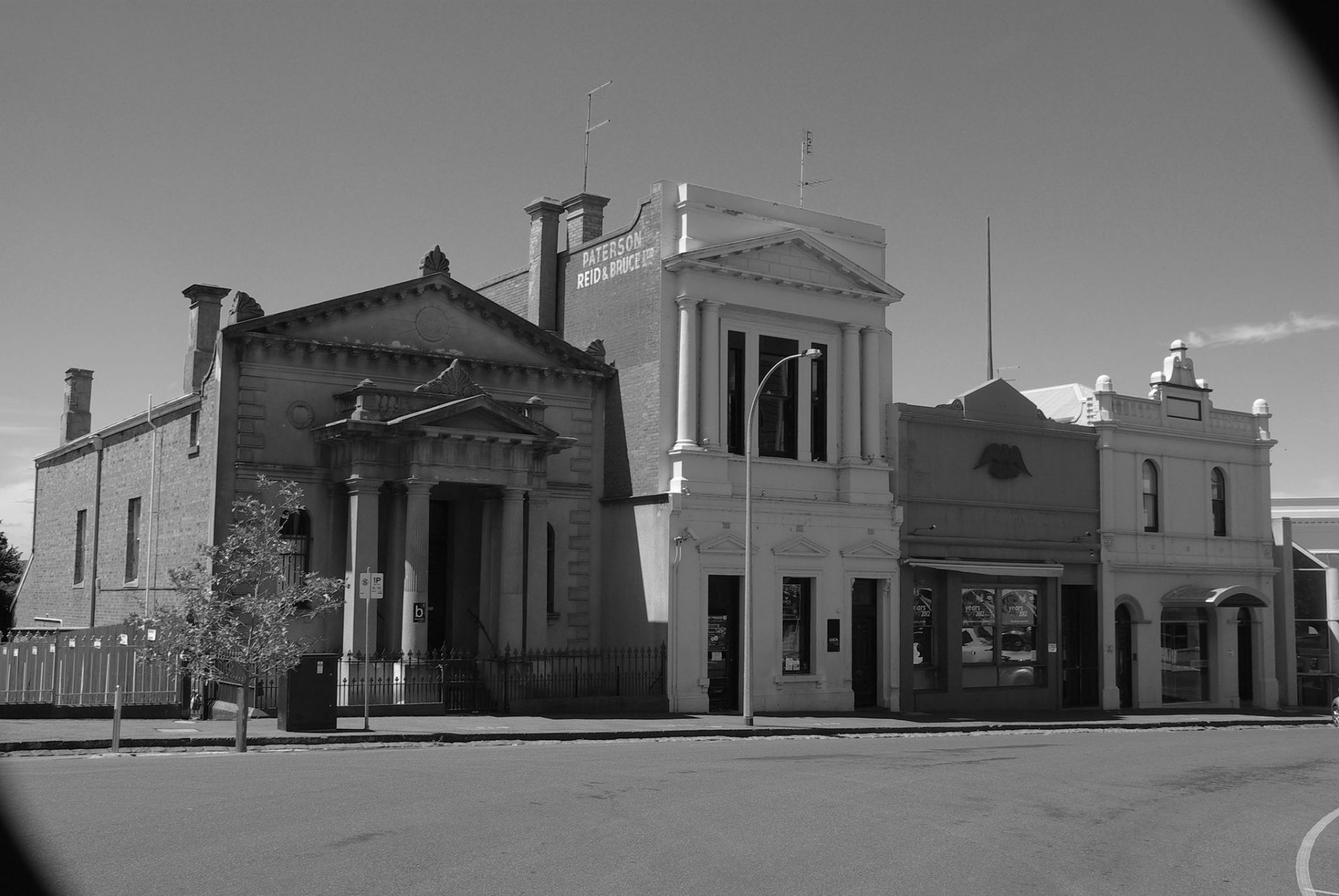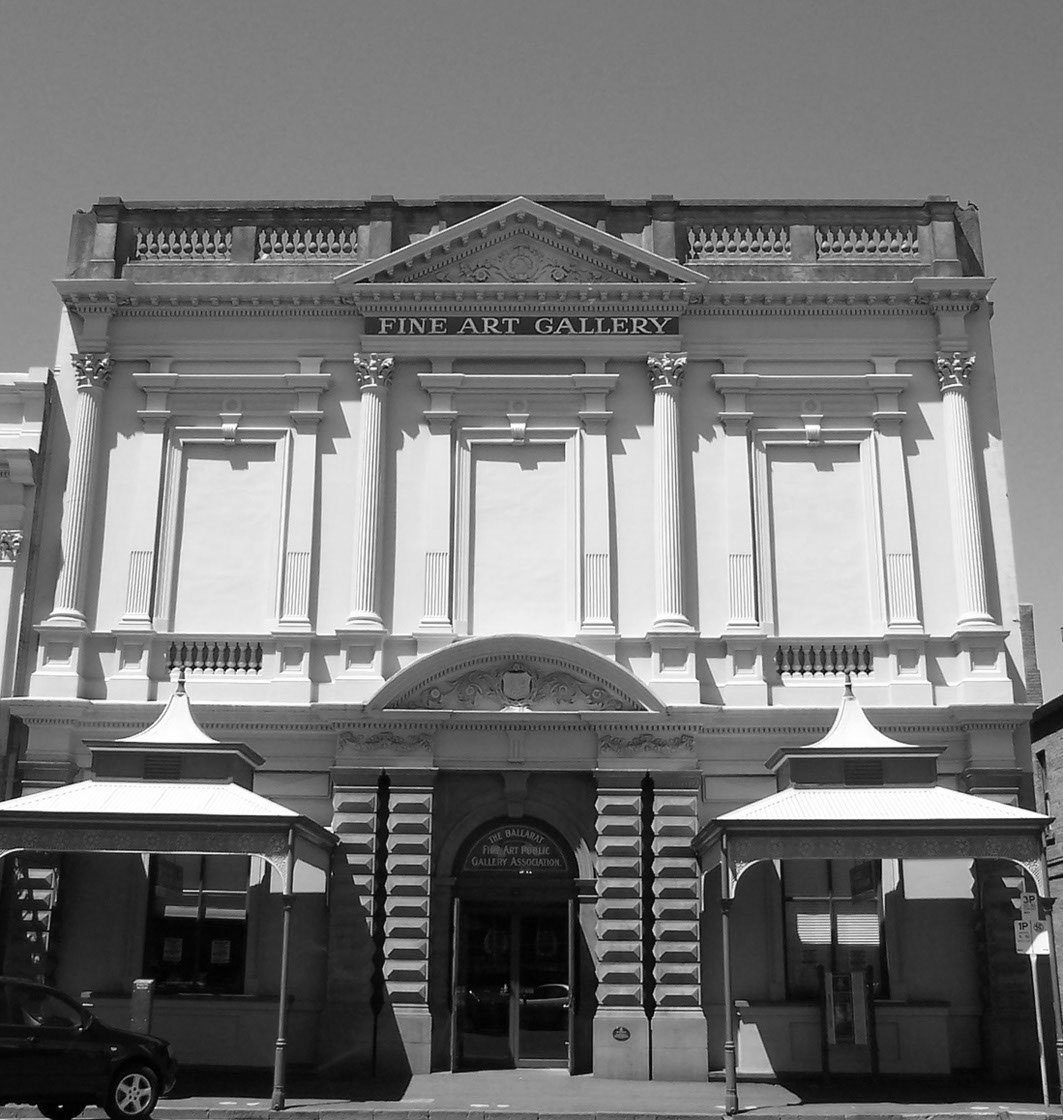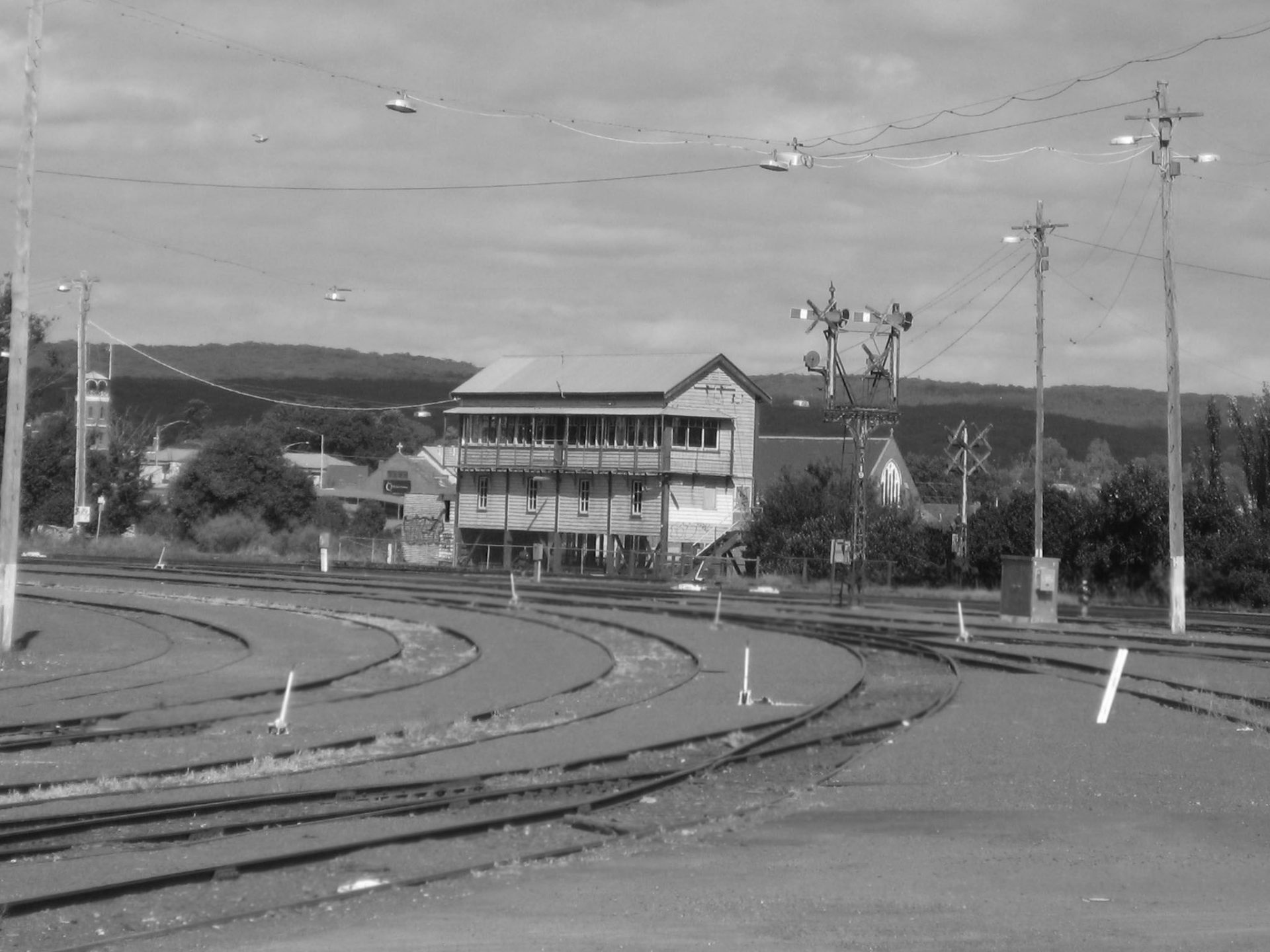Art Deco Buildings in Ballarat
Dorothy Wickham
The Jubilee of Ballarat coincided with Federation and many unusual features reflecting the pride in nationhood abounded in the City of Ballarat. Prime examples are the cast iron rotundas at the cemetery. If one looks closely at the ornamental arches of the rotundas, Australian animals from the coat of arms can be discerned.
With the advent of the Great War (1914) ornamentation became less ostentatious and design simpler. In the interwar years Art Deco was a term used to describe so called ‘modern’ approaches to industrial design, fashion, architecture, furniture and household values. It represented a move away from the excessive decoration of previous styles and was characterised by clean, geometric and elegant lines.
Technological changes meant that many new materials and manufacturing techniques were introduced allowing greater scope. Bakelite was used for household items and many art deco pieces are now highly prized. Jewellery was also manufactured along cleaner and more elegant lines.
The aesthetically significant Art Deco style is evident in many Ballarat buildings along Sturt Street. The design of these buildings is simple, motifs are geometric and they appear elegant and functional. The Regent Theatre and the State Offices in Camp Street were built along art deco lines. The theatre in Lydiard Street North boasts a high two storey 1930s neo-classical façade. The State Offices were modelled on America’s Empire State Building. The façade of the former Wesleyan Church, currently the Hairdressing School at the University of Ballarat’s Lydiard Street Complex was ‘renovated’ in the 1920s into the new ‘modern’ Art Deco style.
The Castlemaine Art Gallery and Historical Museum is also an example of this new ‘modern’ style. When choosing the design of the custom built art deco building, designed by Melbourne Architect Percy Meldrum in 1930, the Gallery Committee stated, ‘After discussion we decided to accept the latest design on “modern lines”. Some felt it was exceedingly plain but we decided to leave the matter in … very good judgement’. The design was influenced by a series of banks in Chicago by Lloyd Wright and others who adopted severe rectangular forms with large areas of continuous unadorned brickwork, to create a massive appearance. The building is now listed on the National Estate and with Heritage Victoria, and for the Art Deco Festival is featuring the work of Christian Waller.
University of Ballarat took part in the state-wide Art Deco Regional Festival which showcased the significant architecture and collections of Art Deco in regional Victoria. The Post Office Gallery exhibited the work of artists of the Ballarat region, in ‘Post Deco’ from 2 to 13 September 2008. The Ballarat Branch of the National Trust conducted a walking tour on 7 September at 1.30pm of inter-war housing in Ballarat featuring the works of architect H. L. Coburn. Buda Historic Home and Garden, Castlemaine, also organised a special exhibition At Home with Art Deco which will feature artworks, decorative arts and domestic items relating to the period 1914-1945.
Image (right) Art Deco, Building in Sturt Street, Ballarat, Gervasoni (Ballarat Heritage Services Collection)








